
Speaking of the prestigious French leather shoes manufacturer, “J.M. Weston (J.M.WESTON). The brand attracts the world with products that symbolize French traditional, such as the “180 Signature Loafer,” which can be called the symbol of the brand, and the “641 Golf,” a U-tip with a rounded silhouette that is very popular. In this issue, we focus on J.M. Weston’s leather shoes, introducing the brand’s appeal and standard items!
Suponsered by
About J.M. Weston
J.M. Weston is a long-established shoe brand founded in France in 1891. Elegant leather shoes made with the highest attention to materials and details have been loved in France for a long time. In 1986, J.M. Weston opened its first boutique outside of Japan in New York, the United States. This was followed by Geneva in 1988, Tokyo in 1993, and Hong Kong in 2004. The leather shoes embodying French elegance have been accepted globally, and currently there are 40 stores worldwide.
How the J.M. Weston brand was born
At the end of the 19th century, Édouard Blanchard founded ” Blanchard “, a factory for men’s and women’s shoes in the Limoges region of France. This shoe factory, which was born in a region with a rich history of tanning and leather processing, was the predecessor of J.M. Weston.
 jmweston
jmweston
Eugène, son of Edouard, joined J.M. Weston shortly after its founding and was an early adopter of the modern shoe-making methods used in the U.S. In 1904, Eugène came to the U.S. and learned the Goodyear welt method in Weston, Massachusetts, near Boston, which is now the mainstream of leather shoe making. The Goodyear welt method, which is the mainstream of leather shoe making today, was learned in Weston, Massachusetts.
At a horse race track in Paris, Eugène Blanchard met Mr. Viard, a businessman. The two, who shared the same brand, skills, and ambitions, opened a store in Paris as a leather shoe brand. The brand was named ” J.M. WESTON” after the place in the U.S. where Eugène himself learned the Goodyear welt method.
J.M. Weston’s iconic shoe ” 180 Signature Loafer
The flagship “180 Signature Loafer”, the “J.M. Weston Loafer 180” was created in 1946. The “180 SIGNATURE LOAFER,” with its unique silhouette, made it possible to wear loafers regardless of style or time, and it soon became recognized as an icon of French elegance.
The “drugstore gang” that popularized J.M. Weston’s loafers
Young people called “Bande du Drugstore” hung out in the drugstores on the Champs-Elysées. The must-have item they all wore was J.M. Weston’s ” 180 Signature Loafer. Wearing loafers with bare feet is now a standard style, but at the time, wearing their father’s shoes with jeans and bare feet was a novel and unorthodox style. The counterculture of young French people expressing their rebellion against the existing order spread J.M. Weston’s fame.
J.M. Weston’s royal U-tip “641 Golf”
Along with the “180 Signature Loafer,” the “641 Golf” has long been a J.M. Weston mainstay. It boasts high popularity as a leather shoe that can also be used for casual styles. As the model name suggests, these shoes were made for the sport of golf.
Because of the rubber sole, they can be worn without fear whether it is raining or snowing. As the original all-purpose shoe, they are also called “journalist shoes” because of their toughness. The Ridgeway sole, featuring a fine fin-like tread pattern, has a strong grip and reduces the risk of slipping on wet surfaces.
The Golf’s appeal also lies in its ability to take on a completely different look by attaching a quilt (sold separately).
 engrandepompe
engrandepompe
J.M. Weston’s leather soles are manufactured by its own tannery
There is a profession called “tanner” that transforms “leather” into “leather,” the most important material for leather shoes, by tanning the “hides” before tanning with skilled techniques. The vegetable-tannery where these craftsmen work is called a “tannery,” and J.M. Weston is one of the few shoe manufacturers that has its own tannery for leather soles. Located just a few kilometers from Limoges, where the company’s main factory is located, the Tannery Bastin in Saint-Leonard-du-Nobula. Tannery Bastan’s manual tanning process values rare craftsmanship rather than mechanical speed. Made by a strictly defined traditional technique, the sole is used in all J.M. Weston leather soles.
J.M. Weston’s leather shoe manufacturing
J.M. Weston also produces boots for the SS of the French Republic. J.M. Weston has been making leather shoes in its workshop in Limoges, where the company was founded over 100 years ago. The cutting of leather, stitching of uppers, cutting of soles, assembly, glazing, and more than 150 other processes are the culmination of traditional skills.

It takes about two months to make one pair of shoes, and 200 craftsmen put their expertise into not only the immediately noticeable details, such as the calfskin lining and the reinforced core that prevents the shoes from losing their shape, but also the details that are not visible.
J.M. Weston’s wide range of sizes
In general, shoe sizes are usually offered in 5mm increments. However, J.M. Weston’s shoes are available in 4mm increments. Also, the width (Width) is available in six levels from A to F. This is a great feature, as it is not uncommon for Japanese people who buy shoes made overseas to have a hard time finding a shoe that fits.
Once your feet get accustomed to J.M. Weston’s leather shoes, you can enjoy a fitting that wraps around your feet. It is also a pleasure to continue to wear them and develop them into a pair that is unique to you.
J.M. Weston’s special orders
At J.M. Weston, you can customize your favorite materials and colors by up-charging for regular models. This “special order” service, which could be called a pattern order, allows you to create, for example, a “641 Golf” in alligator leather or a “180 Signature Loafer” in sharkskin. The unique leather shoes made in the workshops in Limoges, France, are a pleasure that cannot be obtained with ordinary ready-made shoes.

Introducing J.M. Weston’s standard models
J.M. Weston ” 180 Signature Loafer
This flagship model has been a long seller for 60 years since its birth. The moccasin part that shows a high level of technical skill, the protruding flap by the Goodyear welt method, and all other details seem to have been calculated.
J.M. Weston ” 173 Tassel Loafer
A timeless classic tassel loafer. This pair exudes sophistication and can be worn off-duty or with a suit. The hand-stitched apron and leather laces highlight the detailing.

J.M. Weston “641 GOLF
Traditional derby shoe with 5 eyelets and lace-up. The rounded toe and unique apron shape embody French elegance. The Ridgeway sole, one of the most functional of all rubber soles, is used, making them ideal for a wide range of uses, even on slightly difficult terrain. The urban atmosphere of this pair makes it perfect for jackets and casual styles.
J.M. Weston “705 Side Gore Boots
J.M. Weston’s 705 side gore boot is a close second in popularity to the 180 Signature loafer and the 641 Golf. The luster that only fine leather gives off exudes a sense of luxury. The upper, made with a luxurious single piece of leather, succeeds in creating a mature atmosphere with its simple yet three-dimensional structure. The center nose line, which has been peculiarly divided into several degrees, is superb.

J.M. Weston “677 Hunt Derby
Along with the 180 Signature Loafer, the 641 Golf, and the 705 Side Gore Boot, this is the brand’s iconic model. The Norwegian manufacturing method is used, in which the upper and sole leathers are sewn together by hand by craftsmen, making it one of the most time-consuming and labor-intensive of all models. The toe portion is skin-stitched by hand without a needle penetrating the leather, and such craftsmanship is one of the factors that make these shoes so popular among shoe lovers.
For inquiries, please contact
Tel: 03-6805-1691 ( J.M. Weston Aoyama Store)






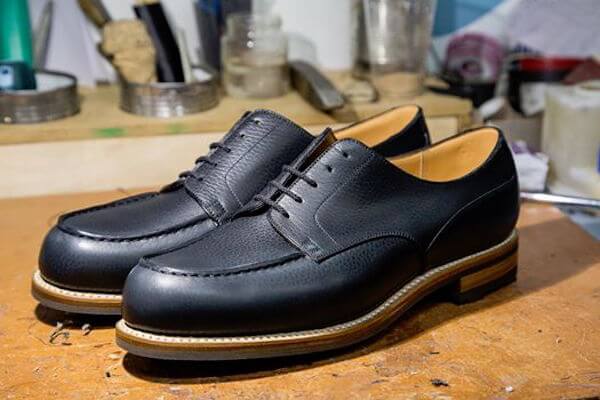








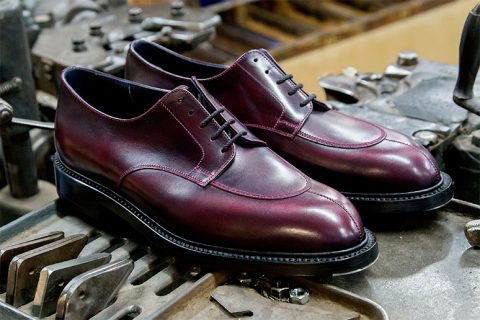






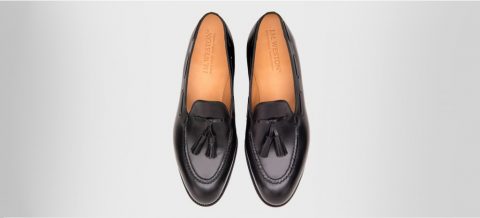



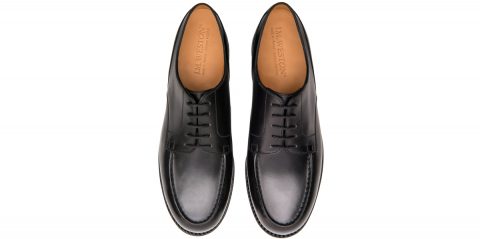







![Waterproof spray for shoes [ how to choose without fail & 18 recommendations ].](https://otokomaeken.com/wp-content/uploads/2024/03/82ca73c489d79da5328aaacae7d2266d-630x331.jpg)




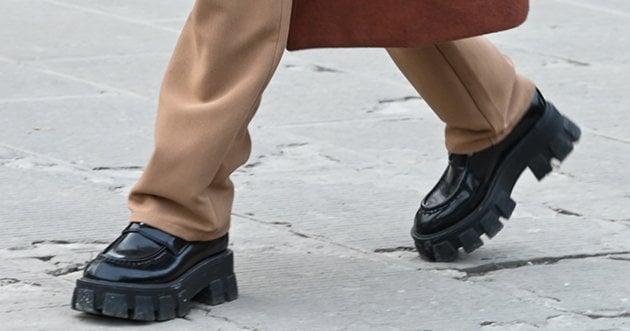

















![A roundup of the 65 most popular brands of jeans [ 2024 Denim Latest ].](https://otokomaeken.com/wp-content/uploads/2015/04/777f096a10d40de2a7037fce7da8f708-115x60.jpg)



